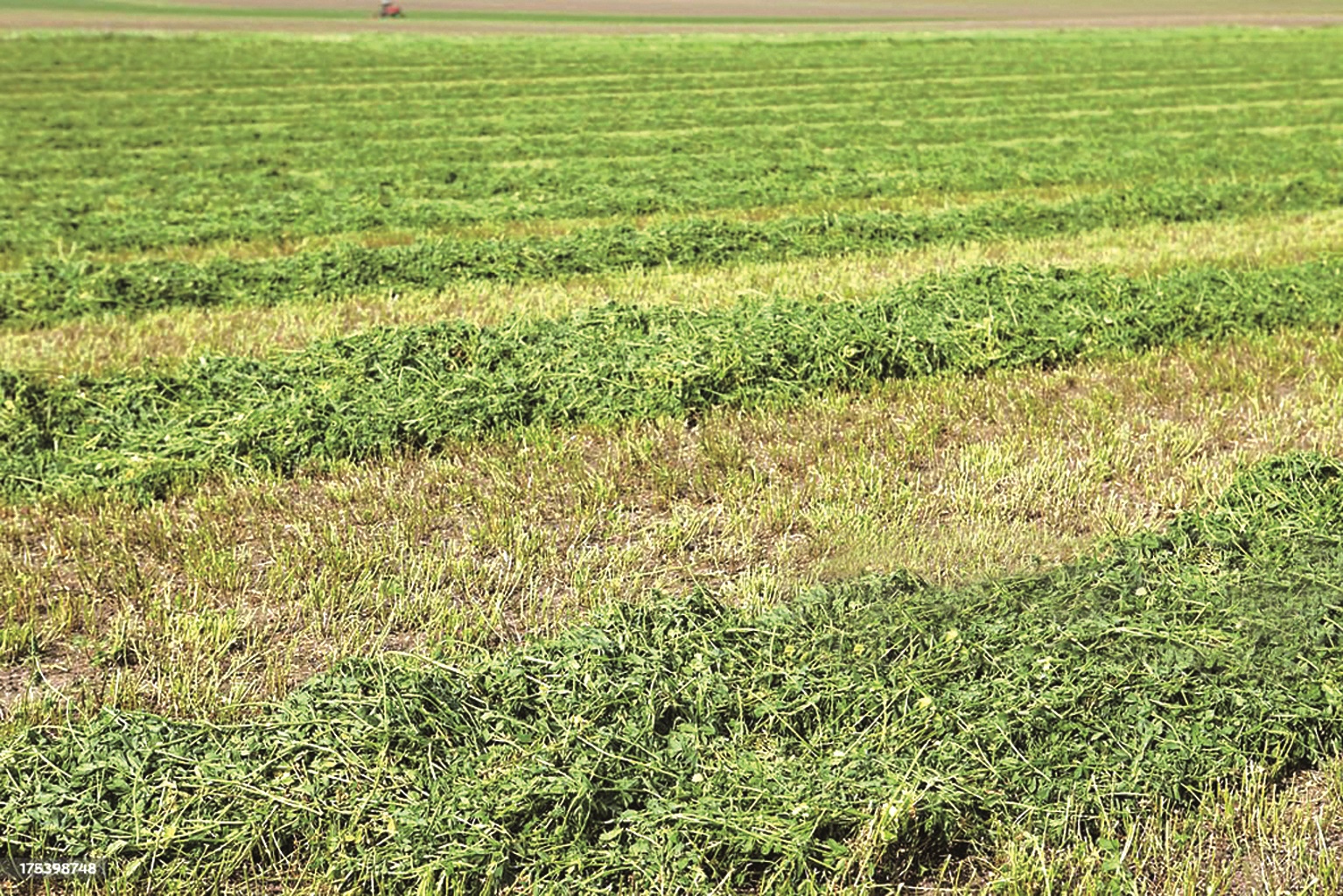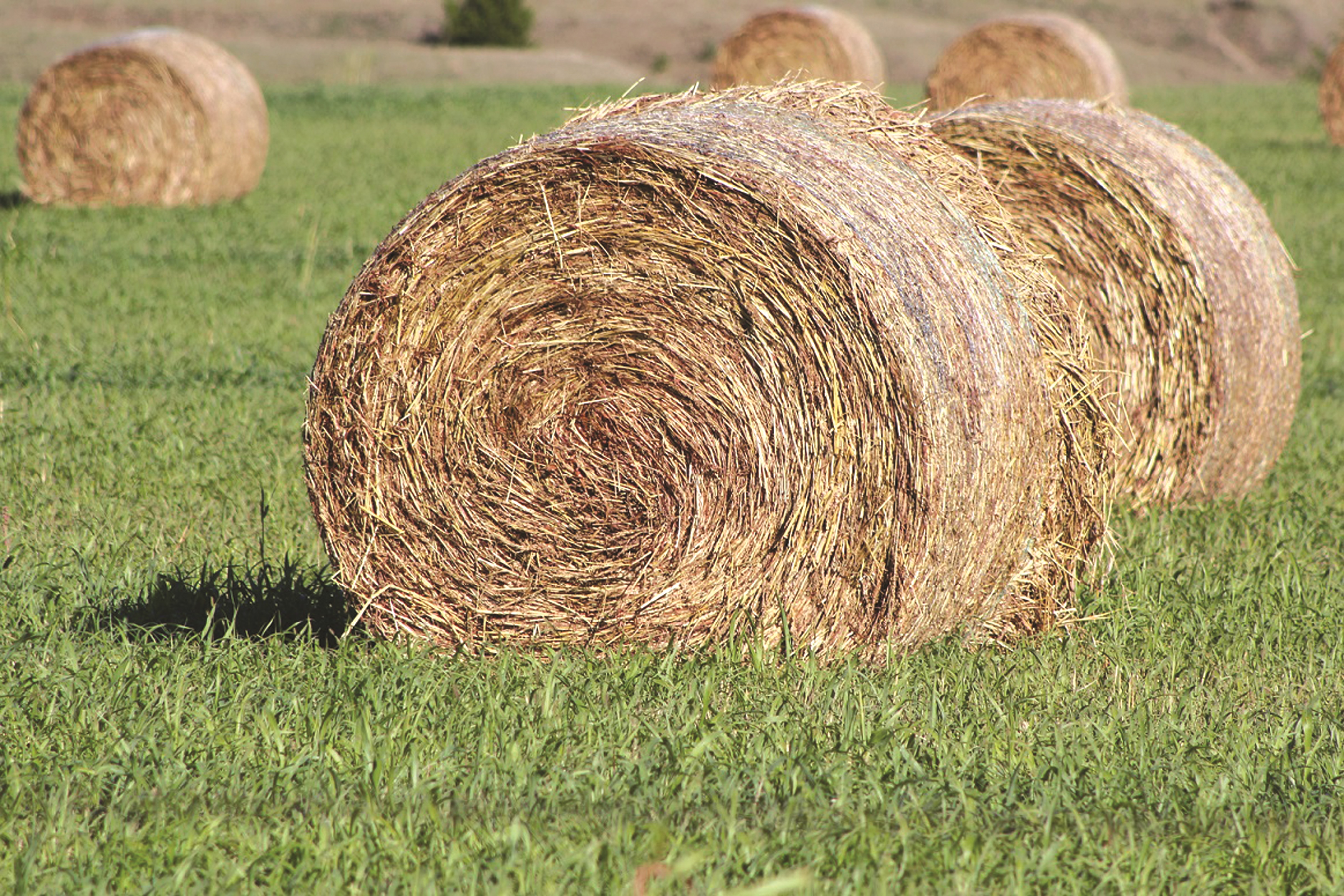February 2024
| PIETMAN BOTHA, INDEPENDENT AGRI- CULTURAL CONSULTANT |
 |
Making hay is expensive, so farmers must first decide why they want to do it. If hay is needed in the fodder flow, it has to be made. However, grazing animals on pastures is a better option as hay is not as nutritious as fresh forage grazed by animals.
In addition, hay is harvested and stored, which requires manual labour and machinery. But utilising the surplus of forage pastures during peak growing times for use as feed during the winter is wise if the forage is harvested correctly and stored properly.
Deciding when to make hay is a critical decision and should be based on an understanding of plant growth. Harvesting should be done when there is a likelihood of several days of good haymaking weather. ‘Make hay while the sun shines’ is a familiar phrase, but there is more to consider in determining good haymaking weather than just sunshine. Understanding the following concepts will enable a haymaker to utilise the weather in the successful production of high-quality hay.
The objective for haymaking should be to produce a stable animal feed of good nutritive value, with a minimum loss of dry matters and minimum expenditure. The principle involved in good haymaking is to reduce the water content of grass or hay rapidly to 15% to 20% moisture, so that it can be stored safely without undergoing fermentation or start burning. This must be accomplished in such a manner that the hay is not leached by rain and that the loss of leaves is kept to a minimum.
High-quality hay should be leafy. Leaves are generally richer in food value than other parts of the plant. Leaves are usually rich in proteins, vitamins and minerals. A loss of leaves would compromise the feeding value of the end product.
Timing is very important. Harvest the crop at the best stage for its maximum nutritive value and yield. Forage crops produce more yield as they mature, but the nutritive value and palatability decrease after first bloom or heading (anthesis stage). Good hay must be harvested to balance the best quantity with quality. It is always good to decide where in the fodder flow you are going to use the hay. Animals in production must receive high-quality hay, but dry or pregnant animals can use lower-quality hay.

Windrows should preferably be wide and loose.
https://www.istockphoto.com/photo/freshly-cut-alfalfa-field-windrows-gm175398748-20302560
CUTTING THE HAY
Cut the hay so that the drying and baling can be done efficiently while maintaining the quality. This means that if you can bale 20 hectares per day, cut only 20 hectares per day. The hay-mower usually cuts and lays the hay in windrows to facilitate the drying of the hay.
As far as time is concerned, the crops should be harvested early in the morning because at this time the dew has dried off. Grasses should be cut at the pre-flowering stage.
Dry the hay to 15% to 20% moisture. Forage is up to 90% moisture, so a great deal of drying must take place. Forage in windrows can be 25% moisture within a few days with the favourable temperature and relative humidity. Windrows should be designed so that the hay dries as quickly, evenly and completely as possible. Conditioning swathers help the leaves and stems to dry at similar rates.
Drying is facilitated by turning the windrows over. Turning hay in a tumble-weed fashion leads to leaf loss and is discouraged.
Extremely hot, dry weather can cause the forage leaves to dry too much before the stems dry, which is causing the leaves to become brittle. Brittleness results in breakage and a loss of leaf matter, which lowers the quality of the hay.
WHEN IS THE HAY DRY ENOUGH?
Two rule-of-thumb methods used by farmers in determining when hay is dry enough for storage:
BALING
The sun can also bleach the cut forage, which changes the colouring as well as removes some of the vitamins. Maintain the green colour, which is a strong indication that the forage is maintaining its food value. Therefore, it is important to start baling as soon as possible. In South Africa it is possible to get grasses such as oulandsgras and teff dry enough to be baled within one day. Other species such as Smutsvinger grass, Rhodes and white buffalo grass need to lie in the sun for up to three days to dry before they are ready to be baled. It is important to measure the moisture and to bale it as soon as it is possible.

It is important to measure the moisture of the hay, and bale it as quickly as possible.
WHAT IS GOOD-QUALITY HAY?
With the right time of cutting and baling, it is possible to make good-quality hay. But you need the best fertiliser programme to produce excellent hay.
It is important to have a soil analysis and to apply fertiliser according to the needs of the soil. As a rule of thumb, grass will need between 0,2 kg to 0,25 kg nitrogen (N) fertiliser for every 1 mm of rain. In other words, 100 kg N per hectare is needed for a 500 mm rainfall area. Normally phosphorus (P) is applied in the ratio of 10:1 N and P, while potassium (K) is applied in the ratio of 10:2 N and K if the grass is cut, baled and driven away.
With the best fertilisation programme and the best timing to cut, rake and bale, farmers can be sure to make excellent quality hay.
Publication: February 2024
Section: Pula/Imvula